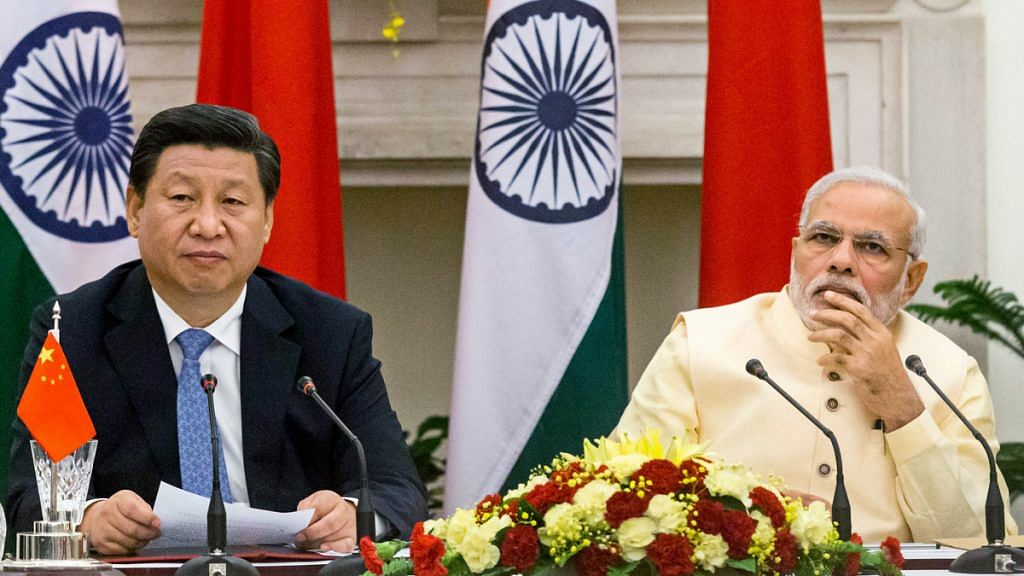While the United States and China inch toward a deal to end their bruising trade war, India is still struggling with its lop-sided trading relationship with Beijing.
A commitment from China made by President Xi Jinping to Prime Minister Narendra Modi during the “informal” summit in Wuhan in April last year to import more Indian goods, starting with rice, sugar and pharmaceuticals, has had little impact on a widely imbalanced trading relationship.
New trade figures from China’s General Administration of Customs, ThePrint can reveal, paint an alarming picture of relations with India’s largest trading partner. In 2018, two-way trade reached $95.5 billion, up 13 per cent from the previous year (when it stood at $84.4 billion). India’s imports, however, made up just $18.8 billion.
But if trade has increased, so has India’s deficit. The trade imbalance, in China’s favour, is now $58 billion, up from $51 billion in 2017. China’s exports to India have grown to $76.7 billion, now accounting for a record 80 per cent of the total two-way trade.
Also read: After giant pharma push, China keeps Indian drug makers waiting
In a relationship fraught with a history of political difficulties, trade has over the past two decades emerged as among the few bright spots. In the past five years alone, two-way trade is up by one-third.
The problem is, even this bright spot is now in choppy waters. Campaigns by India to open up the Chinese market to Indian IT and pharma exports haven’t appeared to have made headway.
In April, at the Wuhan Summit, Prime Minister Modi and President Xi discussed increasing Indian exports of rice, sugar and pharmaceuticals to China. But Indian companies say that statements of intent from Chinese officials haven’t always been followed through with action. Rice and sugar would, in any case, have a limited impact on narrowing the deficit.
India’s larger concern is with regard to services, and the lack of market access for both Indian IT and pharma companies. An uneven playing field is hardly a uniquely Indian problem, and is one of the targets of US President Donald Trump’s trade war with China. However, unlike the US, whose market and technology is still invaluable for Chinese companies, India has comparatively little leverage.
Also read: India could stand to gain from US-China trade war
Part of it is a problem of India’s own making. India’s approach to trade with China has been ad-hoc and piecemeal, lacking a coherent strategy.
Unlike how China approached the West, India opened a market worth tens of billions of dollars to Chinese technology and power companies, while getting little in return, either in the way of Chinese investments in India or in terms of securing market access for Indian companies in China.
Indian companies, meanwhile, continue to have a range of non-tariff barriers in China, particularly in IT and pharma, where a lack of transparency in regulatory policy has hindered Indian firms. While the lack of a level playing field has certainly disadvantaged Indian companies, here, too, our approach hasn’t helped either.
Unlike most Western countries, it is remarkable India doesn’t have an equipped chamber of commerce in Beijing to help navigate the complex legal and regulatory requirements of the China market. The Confederation of Indian Industry (CII) has had a representative office in Shanghai that has admirably championed Indian firms, but with very modest resources.
Also read: Why India won’t really gain much from China’s slowing economy
India has suffered from a lack of a coherent strategy that has allowed Chinese companies from telecom to power to enter — and profit from — the Indian market without investing a dollar in India or offering reciprocal access to the China market. Consider telecom. India is now one of the biggest overseas markets for Chinese mobile phone companies, but few are manufacturing in India.
There are lessons from China, too, in how Beijing has used its market to attract foreign companies, while at the same time absorbing foreign technological expertise and investment. While India may not have the leverage to follow Trump’s example with China, there are, perhaps, other lessons on offer. For a start, a more coherent trade strategy could help India achieve some of its long-pursued objectives either in the China market or in getting Chinese companies to make in — rather than merely sell to — India.
(Ananth Krishnan is a Visiting Fellow at Brookings India and was formerly China correspondent for India Today and The Hindu).
